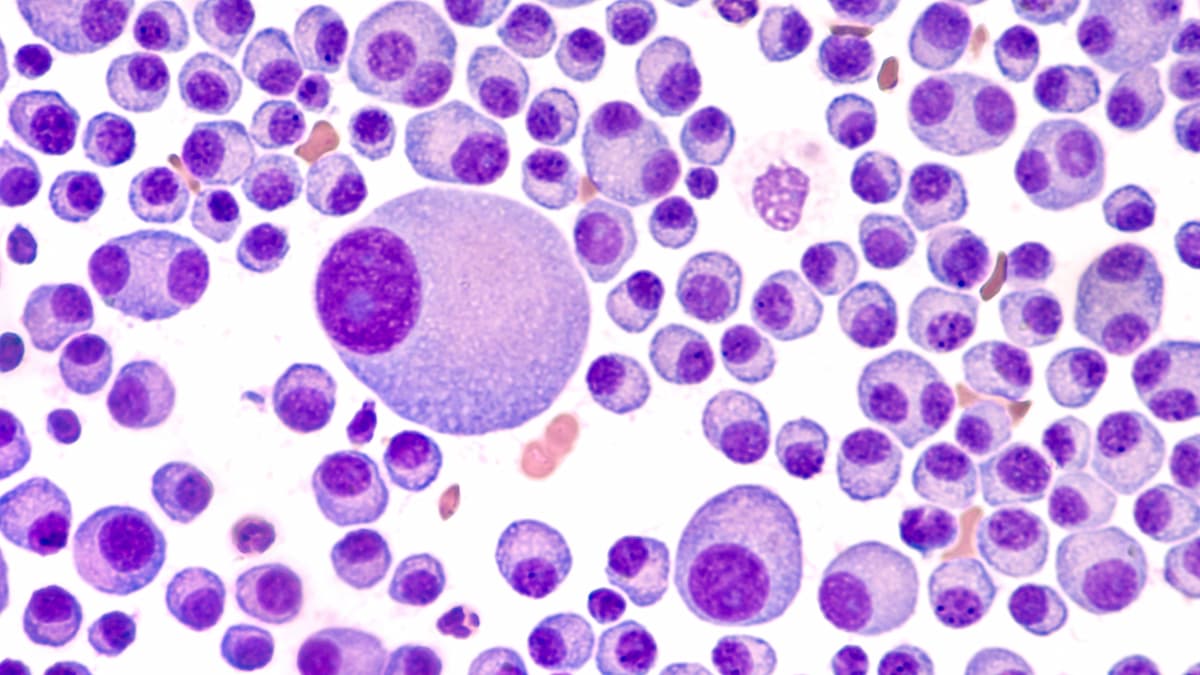Talquetamab Yields Responses in Pre-Treated R/R Multiple Myeloma
Data suggest that those with relapsed/refractory multiple myeloma and poor functional status may benefit from talquetamab without increased toxicity.
"Our data suggests that patients with poor functional status, multiple medical comorbidities, and recent gene-modified adoptive cell therapy benefit from treatment with [talquetamab] without increased rates of [adverse events]," according to the study authors.

Responses were achieved with talquetamab (Talvey) in those with relapsed/refractory multiple myeloma following prior treatment with at least 4 lines of therapy, according to data from a retrospective trial presented in a poster session at the 2024 American Society of Clinical Oncology (ASCO) Annual Meeting.1
Of note, the study showed that talquetamab proved to be safe and efficacious even in patients with other medical conditions or poor functional status.
“Our data suggests that patients with poor functional status, multiple medical comorbidities, and recent gene-modified adoptive cell therapy benefit from treatment with [talquetamab] without increased rates of [adverse events],” the researchers wrote in their poster, which was presented at the meeting.
The researchers analyzed response, safety, and survival data from 21 patients. The median age was 64 years (range, 39-89), 52.4% (n = 11) were male, and 23.8% (n = 5) had an ECOG performance status of 2 or higher. More than half (61.9%; n = 13) had high-risk cytogenetics, defined as del 17, t(4;14), or t(14;16).
Patients on the study were heavily pretreated, with a median of 7 prior lines of treatment (range, 4-11), with 85.7% (n=18) being triple-class refractory and 57.1% (n=12) being penta-class refractory. Most patients—76.2% (n = 16)—received prior CAR-T cell therapy, while 38.1% (n = 8) received a prior antibody drug conjugate (ADC), and 19% (n = 4) received both prior CAR T-cell therapy and ADC. Additionally, 9.5% (n = 2) received prior tri-specific NK cell engagement therapies.
Notably, most patients (85.7%; n = 18) did not meet criteria for the MonumenTAL-1 study (NCT03399799), which was a phase 2 trial that led to the August 2023 FDA approval of talquetamab for relapsed or refractory multiple myeloma that was previously treated with 4 or more therapies.2 Reasons for ineligibility for MonumenTAL-1 included hemoglobin levels, platelet levels, EGFR < 40, ECOG status at or above 2, and receipt of gene modified cell therapy within 3 months before treatment with talquetamab.
“[The] MonumenTAL-1 trial has a wide range of exclusion criteria that include common medical comorbidities (anemia, neutropenia, thrombocytopenia, [acute kidney injury], etc.), limiting the applicability of the study data to the general population,” the researchers wrote.
Findings showed that at a median follow-up of 2 months (range, 1-5), the objective response rate (ORR) was 71.4% (n = 15) and the CR rate was 28.6% (n=6).
When broken down by prior treatment type, the ORR and CR rates were:
- 100% and 30.8%, respectively, in patients who received prior BCMA CAR-T cell therapy
- 50% and 0%, respectively, in patients who received prior BCMA bispecific antibodies
- 75% and 50%, respectively, in patients who received both prior BCMA CAR-T cell therapy and bispecific antibody treatment
Adverse Events from Taleuqtamab
The toxicity data were similar to what was observed in MonumenTAL-1, with 57% of patients experiencing cytokine release syndrome (CRS; n = 12), including 7 patients with grade 1 and 5 patients with grade 2. A total of 23.8% of patients who experienced CRS required treatment with tocilizumab (Actemra). The median time to CRS onset was 4 days (range, 1-7) after administration of the first dose of talquetamab, with a median duration of 3.5 days (range, 1-10).
Regarding immune effector cell-associated neurotoxicity syndrome (ICANS), 19.0% (n = 4) experienced the toxicity, including 1 patient with grade 1; 2 patients with grade 2; and 1 patient with grade 3. Additionally, 14% (n = 3) of patients experienced an infection.
Thirty-eight percent (n = 8) of patients experienced treatment delays, with common causes being CRS, ICANS, and infections. One patient discontinued treatment after the initial step-up dosing of talquetamab due to ICANS and infection.
Skin-related adverse events (AEs) occurred in 61.9% (n = 13) of patients, while nail AEs and dysgeusia were observed in 28.6% (n = 6) and 76.2% (n = 16) of patients, respectively. There were no deaths related to treatment with talquetamab.
References
- Graeter A, Puglianini ACP, Hansen DK, et. al. Effect of talquetamab on resopnses in patients with relapsed and refractory multiple myeloma with prior exposure to T-cell directed therapies. J Clin Oncol 42, 2024 (suppl 16; abstr 7524). doi:10.1200/JCO.2024.42.16_suppl.7524
- U.S. FDA approves Talvey (talquetamab-tgvs), a first-in-class bispecific therapy for the treatment of patients with heavily pretreated multiple myeloma. News release. Janssen. August 10, 2023. Accessed June 3, 2024. https://www.janssen.com/us-fda-approves-talveytm-talquetamab-tgvs-first-class-bispecific-therapy-treatment-patients-heavily